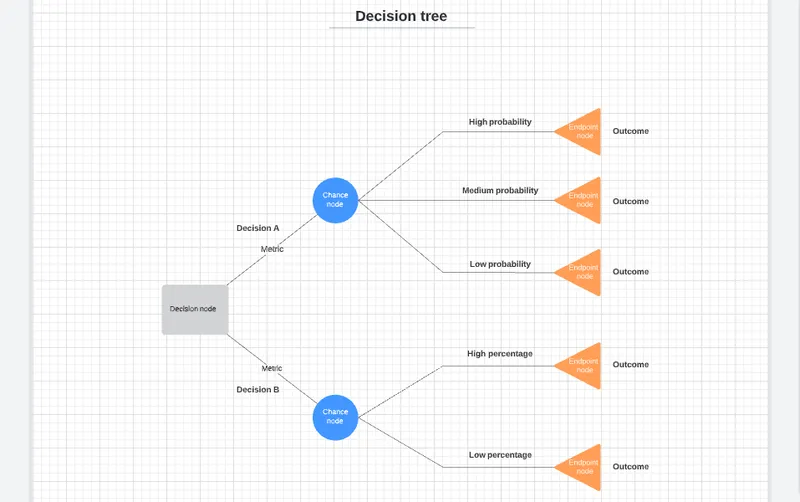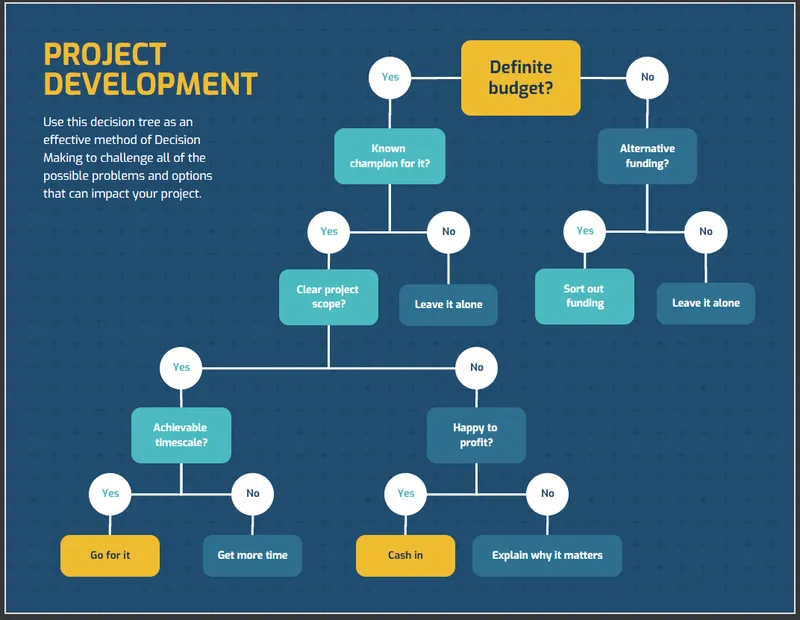
No, not those kinds of trees. (Although some quiet time in a grove of trees could be just the setting to calm your mind and clarify your thinking for decision making!
But the focus of this article is on decision trees. A decision tree is a tool to help people make better informed, more confident decisions.
It diagrams alternatives in a tree-like format. You can plot out most, if not all, possible results of potential decisions available such as outcomes, costs, and unplanned events. You can even set a rating on each choice.
The decision tree has similarities with a mind map. A mind map lets you create ideas and connections to those ideas. But with a decision tree, there is a logical order or process that projects outcomes of certain choices, and a score is usually added to those outcomes.
These scores often represent probabilities. If you have three choices, you may assign two branches with 40% probability, and the third branch would receive a 20% probability. The total of the branches should add up to 100%. However, it is your decision tree, so you are free to use whatever allocations you like.
Some project managers use decision trees to determine the costs of projects. When they assign probabilities to branches, they’ll multiply the total budget by that probability. For instance, if a branch has a probability of 35% and the total budget is $100,000, the branch will be estimated to cost $35,000 (35% x 100,000).
Decision trees don’t have to be this intricate to be useful. You can use them to list alternatives for a particular decision without including more complex calculations. You can also choose to update the percentage of completion for the path that you select.
When others rely on your decision tree -- and you are formally calling it a decision tree -- you may need to follow the process of assigning probabilities and computing percentage costs. But check with your group for what practices and detail they prefer. Fundamentally, a decision tree is simply a tool to convey information to yourself or a team.
Decision trees have a certain amount of subjectivity. In most cases, coming up with probabilities is quite subjective. It’s only through experience that you’ll be able to refine the probabilities.
If the project you are working on is a one-time occurrence, you won’t get the benefit of refining those probabilities. And you will have to start over with a new set of probabilities on the next project. However, some branches may carry over to the new project, and you’ll have a better feel for what to assign to those.
+++
For years, decision trees were created by hand. You can still do that. But there are many online applications that offer templates and tutorials for designing decision trees. Here are just a few:
https://lucid.co/
https://www.mindmeister.com/539355152/decision-tree
https://venngage.com/blog/what-is-a-decision-tree/
Here are some sample templates of decision trees:


This article is the second in a three-part series on Decision Making. The first post can be found at
Decision Making: Avoid This...
Resources
https://en.wikipedia.org/wiki/Decision_tree
https://www.geeksforgeeks.org/decision-tree/